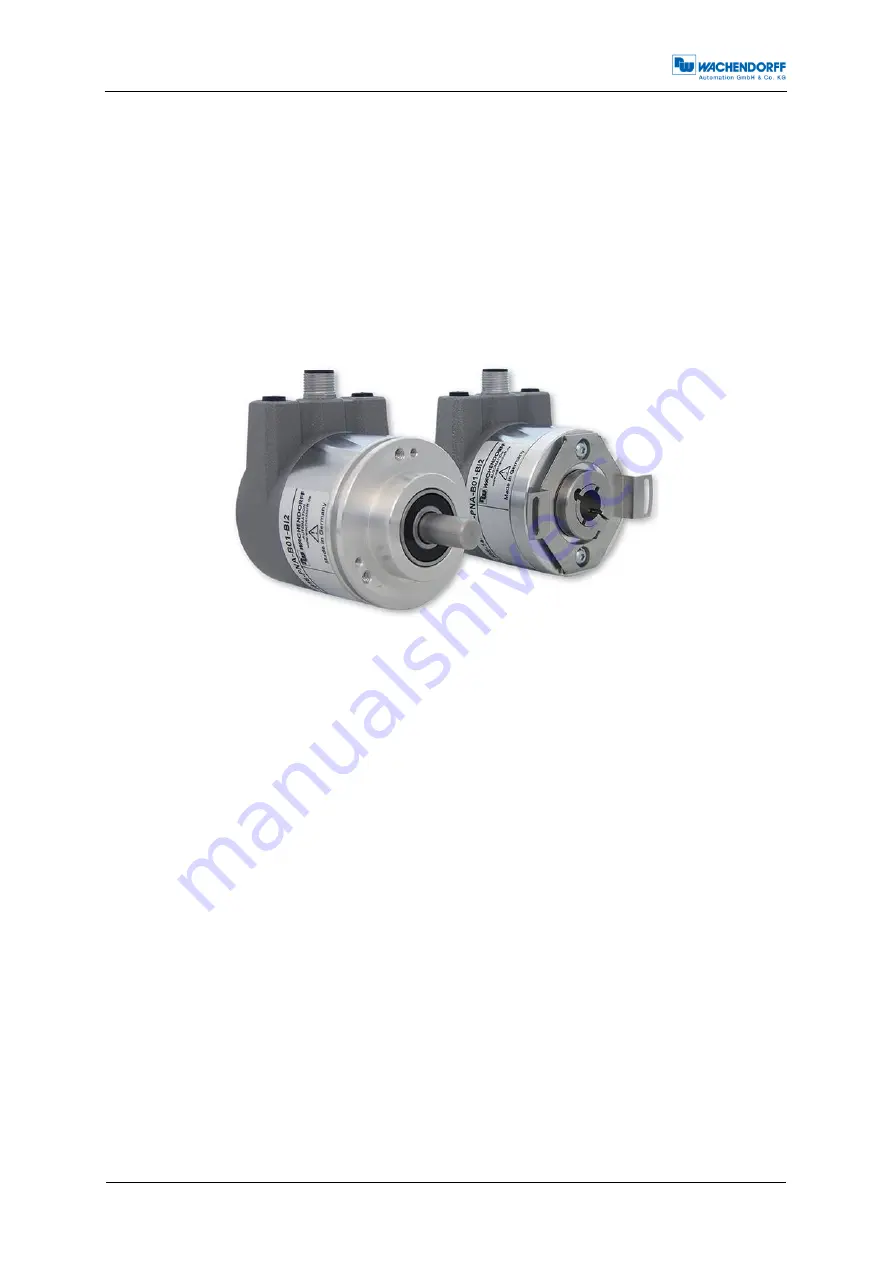
Technical Manual
WDGA with EtherNet/IP
3 - Device description
© Wachendorff Automation GmbH & Co. KG
7
3 Device description
3.1 General information
Various mechanical variants of the WDGA-series encoders with EtherNet/IP are
available. The required variant is determined by the need for a bus cover, the flange
design and the shaft type (solid or hollow). The size is specified as 58 mm by the
diameter at the flange. The following figure shows examples of WDGA-series encoders
with EtherNet/IP.
Figure 3.1: WDGA with EtherNet/IP bus cover
The solid or hollow shaft is connected to the rotating component whose angular
position or rotational speed is to be measured. Cable or plug outlets create the
interface for connection to the EtherNet/IP network. The status LEDs mounted in the
cover signal the various encoder states during operation. They assist with configuration
of the encoder and troubleshooting in the field. The flange holes or supplied spring
sheets are used for attachment to the machine and during the respective application.
3.2 EtherNet/IP
EtherNet/IP is a real-time Ethernet, which was developed by Allen-Bradley and is
managed today as an open standard by the Open DeviceNet Vendor Association
(ODVA). It is based on the CIP standard (Common Industrial Protocol) and is used for
the transmission of cyclic I/O data, as well as acyclic parameter data.
EtherNet/IP offers different topologies, but mostly an active star or ring topology is
used. With the ring topology, the DLR ("Device Level Ring") can be used to prevent a
total failure in the network due to a cable break, for example.
3.3 WDGA
— basic principles
The following sections describe the basic functions of an absolute encoder.






























